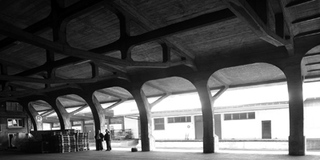Structural Design I
The courses Structural Design I and II explain the fundamentals of how structures function. These courses put great emphasis on studying the relationship between the form of a structure and the internal forces within it by means of graphic statics.
Equilibrium
Introduction to graphic statics. By means of simple tasks, the students learn to disassemble and join forces, as well as to create form and force diagrams using graphic statics.
Resultant
The first step is to combine forces in the plane and to find the magnitude and direction of the resultant in the force diagram and its position in the form diagram.
Creating the resultant of a set of non-concurrent forces
In this task, the position and magnitude of the resultant are found by using a trial funicular.
1.1 Resultant of two non-parallel forces
1.2 Resultant of several non-parallel forces
Interactive Drawing: Resultant of Non-Concurrent Forces
Creating the resultant of parallel forces
With parallel loads, the position of the resultant is more difficult to find. It is always in the center of gravity of all forces.
1.3 Resultant of parallel forces
Drawing of Subsystems
The interactive drawing "Subsystem" helps to try out the system in different options and to find out whether it is a tension or a compression force in the given case.
Interactive Drawing: Subsystem
Stability
By finding the resultant, the stability of an arrangement of structural elements with a given dead weight is determined.
- AUFGABE – Übung 01
- LÖSUNG - Übung 01
- TASK – Exercise 01
- SOLUTION – Exercise 01
